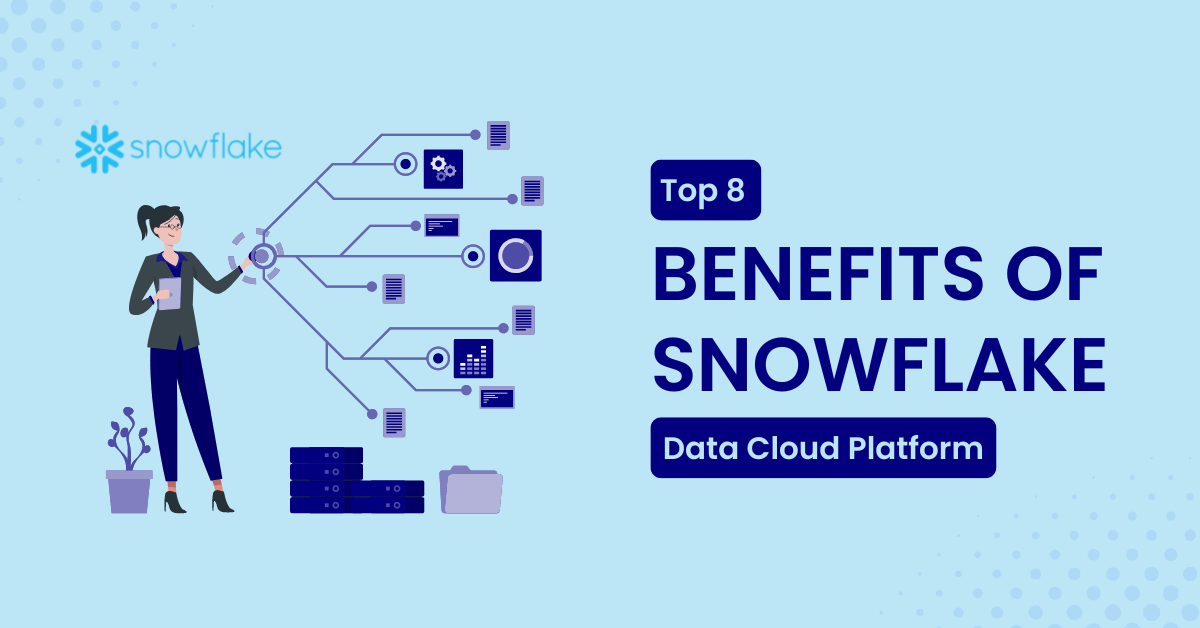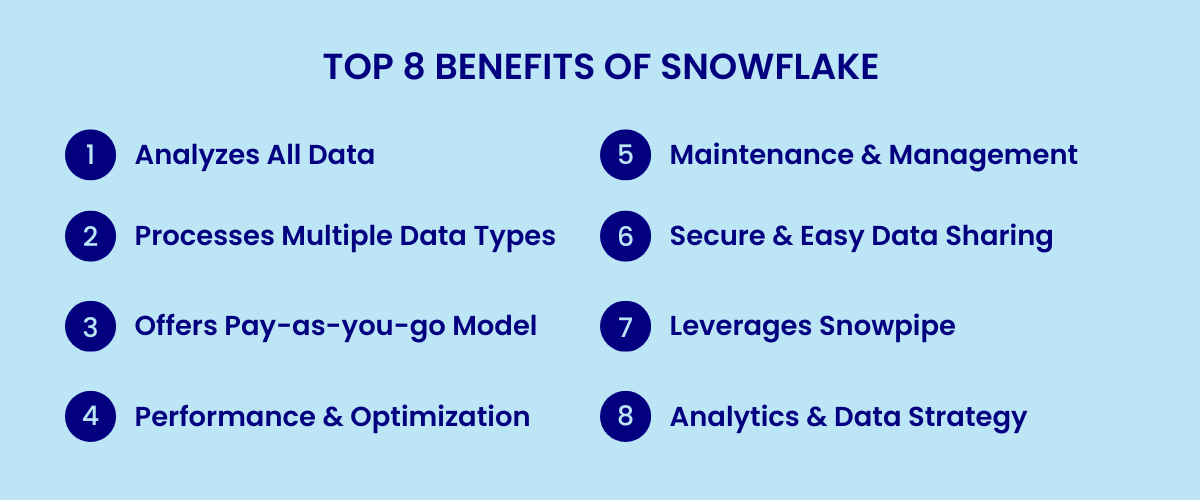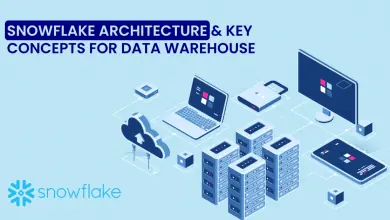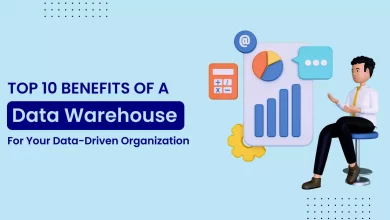Top 8 Benefits of Snowflake Data Cloud Platform

When it comes to data management and analytics, you can’t afford to make a mistake. That’s why we’re thrilled to share with you the Snowflake Benefits. In this blog post, we’re going to explore what Snowflake is and why is it the best choice for you and how it can help you get a handle on all of your data in one place.
What is Snowflake?
Snowflake is a cloud-based data warehouse built for data warehouses. It was created by AWS to help organizations manage their data warehousing needs in a scalable, cost-effective way.
The main objective of Snowflake is to make it easier for companies to store, manage and analyze massive amounts of data without having to worry about the infrastructure that supports it.
Snowflake uses extensibility as a core part of its design, which allows you to extend your warehouse with new functionality and features without having to change the core system. You can also use custom code by writing Java or Python scripts on top of your existing warehouse.
Top Key Benefits of Using Snowflake Data Cloud Platform
If you’re thinking about using Snowflake, here are the Snowflake Benefits.

1. Analyzes All Data
Snowflake is a data warehouse that can analyze all the data you create and store. Snowflake can process all data types, formats, and sources.
This means you can use Snowflake to analyze any type of machine data such as IoT devices or sensors; any type of unstructured or semi-structured data such as audio, video, and text files; and also structured business intelligence (BI) workloads like online transaction processing (OLTP) databases.
Snowflake can handle massive volumes of data at high speeds with incredible performance – even though it isn’t a traditional columnar database or Hadoop platform.
It has been designed from the ground up to enable organizations to run advanced analytics on petabytes or even exabytes of information – regardless of the size, shape, or location where it lives today.
2. Processes Multiple Data Types
Snowflake can handle multiple types of data. You can load your data into Snowflake to perform any type of analytics, including descriptive, predictive, and prescriptive.
You get a single query language and a single execution engine for all your business intelligence (BI) workloads even if they consist of structured and unstructured, big data or relational datasets from multiple sources.
3. Offers Pay-as-you-go Model
The Snowflake Data Cloud Platform is a pay-as-you-go model. That means you only pay for the resources, data, and time that you use on the platform. This model helps you keep costs down and stay agile as your business needs change over time.
The platform provides many ways to reduce your costs:
- Use only what you need by creating tables with specific structures according to your data requirements rather than using an all-inclusive table type like ours or Oracle’s legacy database products.
- Add only what you need at any point in time – this enables you to load data onto tables incrementally without incurring additional charges until those tables are ready for use in production apps.
4. Improves Performance and Optimization
Snowflake’s architecture allows you to run your analytics on top of petabytes of data. This means that instead of worrying about performance and optimization, you can focus on building the best possible model.
5. Eliminates Downtime for Maintenance and Management
Downtime is a fact of life. No matter how much you plan and prepare, it’s inevitable that there will be times when your data centre goes down for maintenance or management.
Snowflake enables you to eliminate downtime for your entire analytics ecosystem, including data warehousing and processing tools such as Apache Spark and Hadoop MapReduce jobs.
With Snowflake’s elastic scalability, you can immediately add additional compute resources when needed with no interruption to business operations or apps that are running on the platform.
In addition, Snowflake’s “self-healing architecture” ensures high availability by continuously monitoring your cluster health and proactively taking corrective action if an issue occurs – all without interrupting service delivery or causing any downtime whatsoever!
This can save hundreds of thousands of dollars per year by reducing the amount of time spent managing databases and performing database maintenance tasks manually – instead allowing teams to focus on more important work like building great products for customers!
6. Provides Secure and Easy Data Sharing
For those who need to share data with partners, Snowflake allows you to easily set up and manage data sharing. You can invite partners to collaborate on a project by sending them an email invitation.
When they accept the invitation, they’ll be able to access the data through their unique account within your Snowflake environment.
You can even set up permissions based on what roles each collaborator has in your organization you could give someone read-only access or allow them full write privileges if it’s required for their role at the company.
Once you’ve set up your users’ roles and granted them appropriate levels of access, you can manage the entire process from within your Snowflake dashboard so that it’s easy for everyone involved!
7. Leverages Snowpipe, Snowflake’s Data Ingestion Service
Snowpipe is Snowflake’s data ingestion service. It’s a managed service for continuously loading data into your warehouse, as well as performing ETL tasks such as transformations and validations.
Snowpipe is cloud-based, which means you don’t have to worry about infrastructure management or capacity planning just focus on building awesome applications on top of your data.
8. Revolutionizes Business Analytics and Big Data Strategy
Snowflake is an enterprise-grade cloud-based data warehouse and data management platform. It provides companies with the ability to scale up their analytics needs by storing their data in one place, making it possible for them to handle massive amounts of information and process it quickly.
With Snowflake, you can easily store, query, and analyze your organization’s structured or unstructured big data whether that’s transactional or real-time sensor data.
And because Snowflake is built on a massively parallel processing architecture, it can run complex queries at lightning speed while scaling seamlessly as your business grows.

Wrapping up
We hope this article has helped you better understand the benefits of using Snowflake. If you’re still unsure about whether it’s right for your business, we encourage you to contact us today and speak with one of our specialists about how this powerful tool can transform your company and offer the Snowflake Benefits.
FAQs on Benefits of Snowflake Data Cloud Platform
Snowflake Data Cloud Platform is an advanced, cloud-based data warehousing platform that lets you manage and analyze big data as if it were stored in a single database.
It’s flexible enough to handle various data types including unstructured, semi-structured, and structured data. Moreover, Snowflake makes it easy for you to get insights into your data quickly without having to worry about the underlying infrastructure.
Snowflake is the only cloud data warehouse that is purpose-built for analyzing mission-critical data. It is designed to handle the high-volume, low-latency requirements of analytic workloads at scale.
Snowflake’s unique architecture features a distributed, columnar data storage system that allows you to append new data to your existing tables while also performing complex analytical queries up to 100x faster than a traditional enterprise database. This makes it easier to keep your data fresh and up-to-date.
Snowflake Data Cloud is designed to meet the highest levels of security. It uses multiple layers of security, including encryption at rest and in transit and two-factor authentication. It also offers data masking, tokenization, and anonymization capabilities.
Snowflake is a fully managed data warehouse service that offers tremendous advantages over Amazon Redshift. Both products run on Google Cloud Platform (GCP), but Snowflake can scale up or down as needed, whereas Amazon Redshift does not.
In an age when companies are more data-driven than ever, it’s critical to have an infrastructure that can scale almost infinitely. That’s why we built our platform on top of AWS and Google Cloud, which are capable of supporting the largest databases in the world.
Flexible schema design – You can design schemas for your tables in Hive (HQL), Impala SQL, or Apache Spark SQL format, which means that you can store any type of data (including nested) and complex relationships between tables without having to worry about the underlying structure of your data warehouse or data lake.
High performance – Snowflake provides fast access to petabytes of historical data through parallel processing and optimized query plans so that you get answers when they’re needed fast!
The first step is to sign up for an account. After that, you can create a new database and start loading data into it.
Yes! You can run your existing databases on the platform and enjoy the benefits of Snowflake’s cloud architecture. If you need help with the same then you can reach us here. Our team will get back to you shortly.





